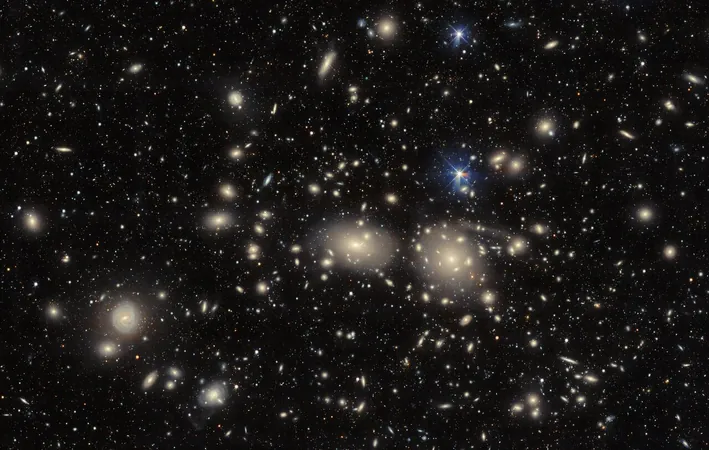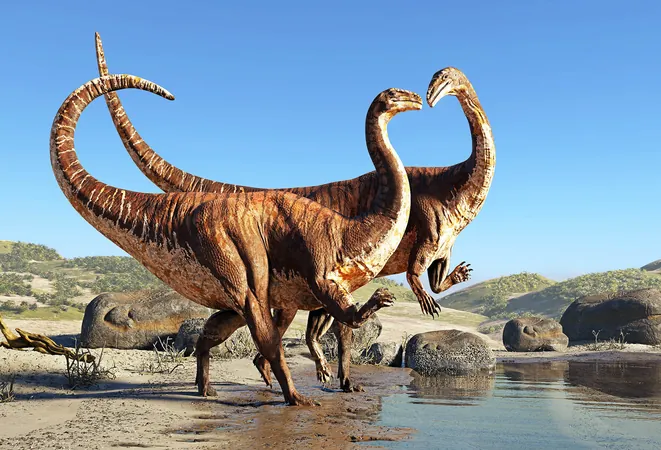
Is the Universe Growing Out of Control? Groundbreaking Measurements Reveal Shocking Expansion Rates!
2025-01-17
Author: Jia
The dynamics of our universe just took an astonishing turn. A striking new measurement has confirmed what many scientists have been whispering about: the universe is expanding at an alarming rate, defying the expectations set by current theoretical models. This phenomenon, often referred to as the Hubble tension, has emerged as a significant conundrum in modern astrophysics.
Recent findings published in The Astrophysical Journal Letters have strengthened the argument that the universe's expansion rate is faster than previous estimates. “What was once just a tension has escalated into a full-blown crisis,” remarks Dan Scolnic, the lead researcher from Duke University.
The quest to understand the universe’s expansion, encapsulated in a value known as the Hubble constant, has captivated scientists since 1929, when Edwin Hubble first unveiled the cosmic expansion. Scolnic provides an interesting analogy: think of the universe as having a “baby picture” representing its early state post-Big Bang and a current “headshot” depicting its present size. The existing models of cosmology should ideally connect these two images—but there's a disconnect.
“This indicates a potential flaw in our cosmological models,” Scolnic states.
To measure the universe's growth accurately, scientists employ what’s known as a cosmic ladder—a series of methods scaling distance measurements to celestial bodies. Scolnic’s ladder is built upon pioneering data from the Dark Energy Spectroscopic Instrument (DESI), which is mapping over 100,000 galaxies nightly from the Kitt Peak National Observatory in Arizona.
Recognizing an opportunity to enhance the precision of the measurements, Scolnic anchored the ladder closer to Earth by calculating an accurate distance to the Coma Cluster—one of the closest galaxy clusters to us. With an innovative approach, he and his team assessed the light curves of 12 Type Ia supernovae within the cluster, which are particularly valuable for distance calculation due to their consistent luminosity.
The researchers arrived at a distance of approximately 320 million light-years—right in line with findings from previous four-decade studies, marking this measurement as highly credible. Scolnic confidently asserts, “This measurement isn’t swayed by assumptions regarding the Hubble tension’s conclusion. This cluster has been studied long before we realized its significance.”
Using this newly acquired distance as the foundational "first rung" of the cosmic ladder, the team determined the Hubble constant to be around 76.5 kilometers per second per megaparsec. This implies that the local universe is inflating at a shocking rate of 76.5 kilometers per second for every 3.26 million light-years—a feat that both aligns with recent measurements but starkly contrasts with predictions derived from theories of the distant universe.
The lingering mystery remains: are the real-life observations flawed, or are our theoretical models at fault? As Scolnic’s team continues to unravel this cosmic puzzle, their findings provide compelling evidence suggesting the discrepancy may lie with the conceptual frameworks currently in use.
Over the past decade, numerous studies have scrutinized the earlier approximations, and despite various modifications, researchers consistently converge on a similar value as Scolnic points out. “We are at a crossroads where our long-standing models are under severe pressure,” he explains. “This could very well redefine our understanding of the universe.”
As new insights emerge, the field of cosmology remains brimming with possibilities. Scolnic’s conclusion is both humbling and exhilarating: “There are still surprises waiting to be uncovered, and who knows what groundbreaking discoveries lie ahead?” The universe, it seems, has more secrets yet to reveal.




 Brasil (PT)
Brasil (PT)
 Canada (EN)
Canada (EN)
 Chile (ES)
Chile (ES)
 Česko (CS)
Česko (CS)
 대한민국 (KO)
대한민국 (KO)
 España (ES)
España (ES)
 France (FR)
France (FR)
 Hong Kong (EN)
Hong Kong (EN)
 Italia (IT)
Italia (IT)
 日本 (JA)
日本 (JA)
 Magyarország (HU)
Magyarország (HU)
 Norge (NO)
Norge (NO)
 Polska (PL)
Polska (PL)
 Schweiz (DE)
Schweiz (DE)
 Singapore (EN)
Singapore (EN)
 Sverige (SV)
Sverige (SV)
 Suomi (FI)
Suomi (FI)
 Türkiye (TR)
Türkiye (TR)
 الإمارات العربية المتحدة (AR)
الإمارات العربية المتحدة (AR)